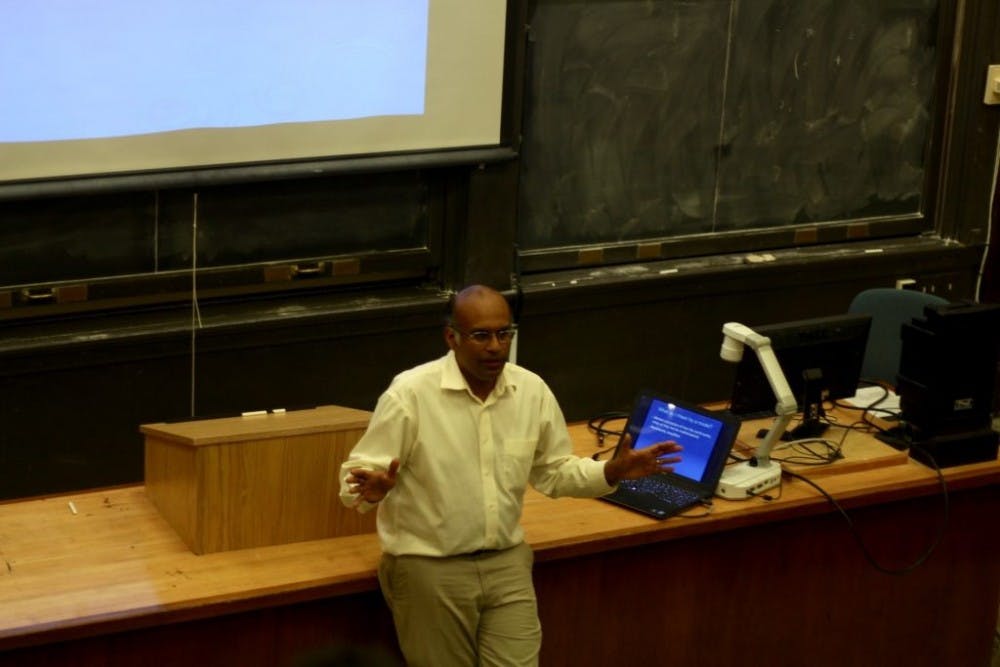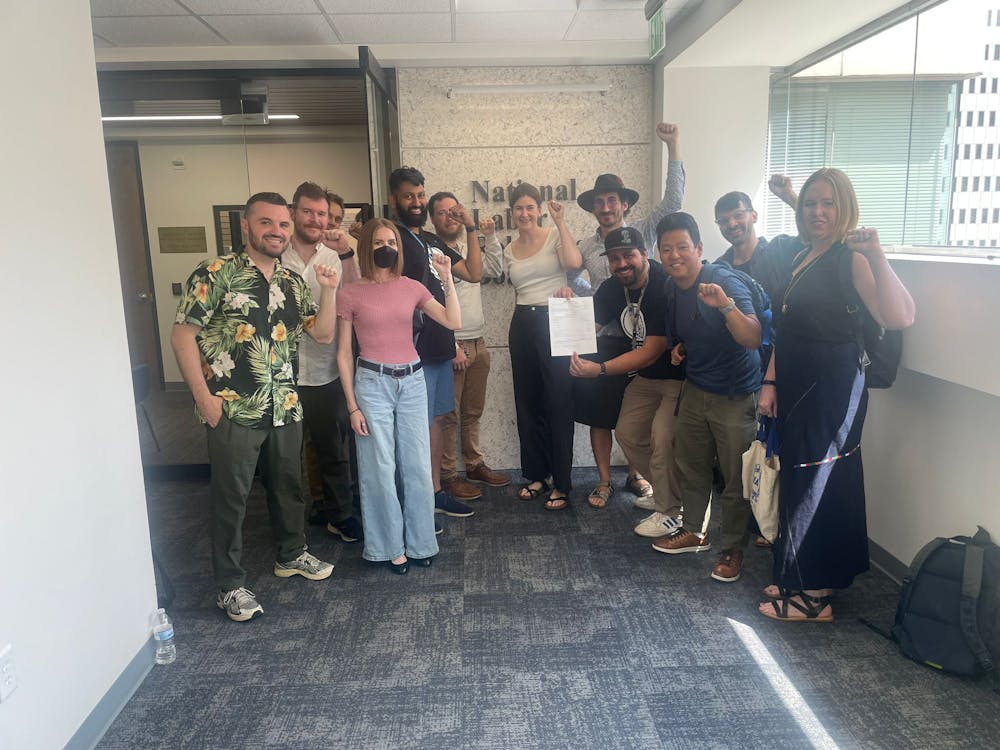The Hopkins Dialectic, a Christian student journal, hosted Anand Gnanadesikan of the Department of Earth and Planetary Sciences to speak at an event titled “Models of Truth: An Environmental Scientist’s Perspective” in Krieger Hall on Sept. 15.
The Dialectic, which first published last spring, is focused on exploring the intersection of Christian faith with science, literature and philosophy. Gnanadesikan, a practicing Christian, spoke on the relationship between science and faith and its role in how he perceives life.
He began by explaining the skills involved in his work in environmental sciences.
“What I do in my professional life is I make models of how the planet works by looking at how different parts of a system work together [which allows me to] draw conclusions about mobility, dynamics and understand how this evolves over many time scales and how it will change in the future,” Gnanadesikan said.
He then shifted to the topic of modeling. Gnanadesikan argued that a model is a simplified mental conception of how the world works and further elaborated that all models must be simplified.
“There is only one planet; there is a system that is too big for me to study,” Gnanadesikan said. “It has too many processes going on for me to isolate just one.”
However, as a result of this simplification, Gnanadesikan explained that all models were wrong and incomplete in some way, which calls into question their usefulness and the validity of their insights.
One of the models that Gnanadesikan discussed was the Stommel model. Key to understanding the ocean salinity gradient, Stommel’s model reduced ocean waves and currents into two simple boxes. According to Gnanadesikan, this model has reduced the entire ocean circulation into one single equation, enabling it to predict salinity transitions.
While modeling is often applied to science, Gnanadesikan went on to explain the importance of models in everyday life. Taking away lessons from Stommel’s model, he suggested that simplification was essential to understand the complex world around us, and that how we simplify our worlds establishes what we learn about it. For example, our own models could be based on culture, family, personal desires and moral frameworks.
“In thinking about our models, we think about ourselves — what’s good for me is good for the world,” Gnanadesikan said. “We also think about family. We don’t want to live in a way that would let our family down or differ from the way we were raised.”
Gnanadesikan related his own struggle to find his model, which began by trying to emulate important leaders.
“The only way to be loved is to be worthy,” he said. “And the only way to be worthy is to be like Gandhi or Jesus... You want to be like Gandhi or Jesus, ok?”
Gnanadesikan then noted that it was complex to be like Gandhi or Jesus, and that his idea of a model grew to seek the source of love which he found in the book of John in the Bible.
“No one has ever seen God,” Gnandesikan said. “God’s only Son, the one who is closest to the Father’s heart, has made Him known.”
In his final remarks, Gnanadesikan challenged listeners to find their own model.
“Who is your model? What is your model? When [you] follow this, does it bring love?” he asked. “You need to find a path where... what you see coming out is love.”
Organizers of the event, Dan Ju of The Hopkins Dialectic found Gnandesikan’s lecture interesting and relatable.
“I really appreciated [Gnanadesikan’s] tone, which was very respectful and gentle in explaining his understanding of the way things work,” Ju said. “I get a sense of helpfulness from him, and think he brought something really profound [into discussion].”
Graduate student Michael Mow, the Dialectic member who invited Gnanadesikan as the speaker, echoed Ju’s thoughts on the talk.
“I think he left it very open and very thought-provoking, which is good because [the goal of The Hopkins Dialectic] is to encourage discussion, and not just give the right answers about everything,” said Mow.
Other students, including freshman Bessie Liu, appreciated the unique relationship between Gnanadesikan’s profession and his views on life.
“I thought it was a really interesting connection he made between [the modeling of] ocean waves and morals,” Liu said.





